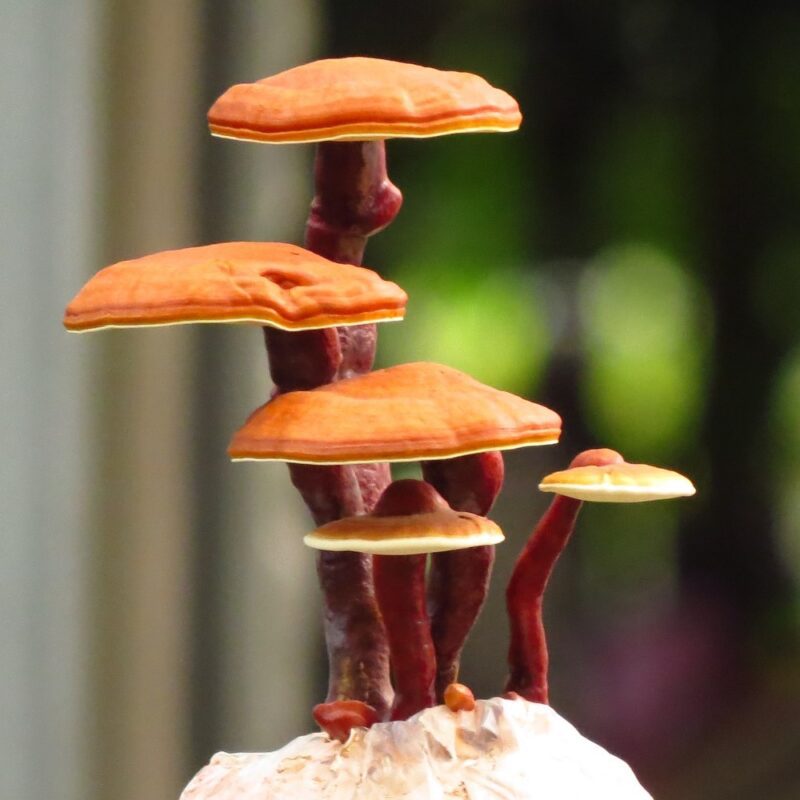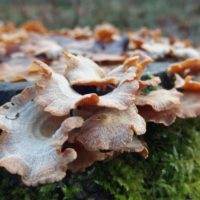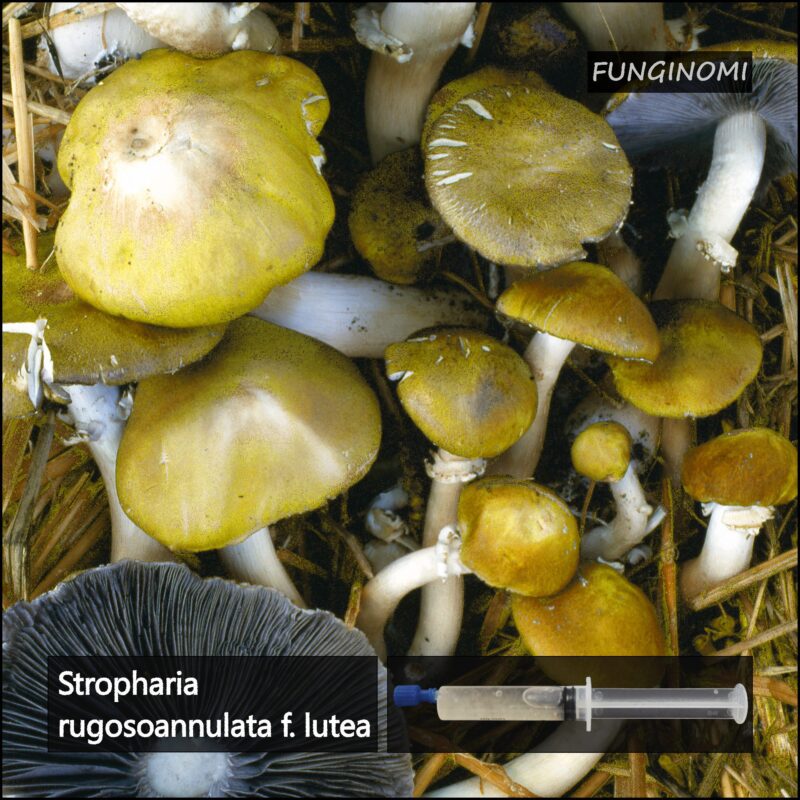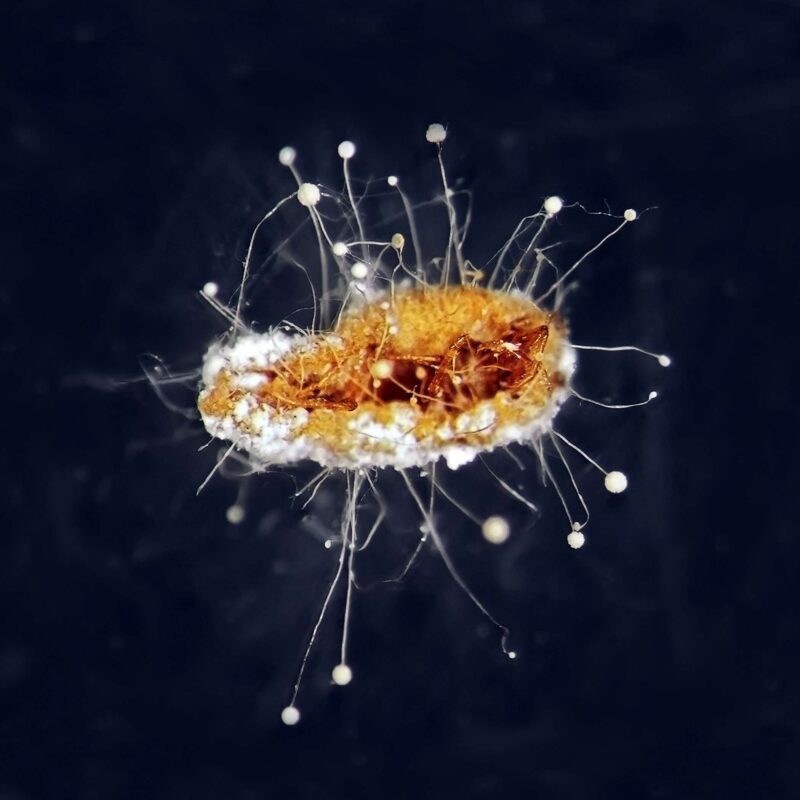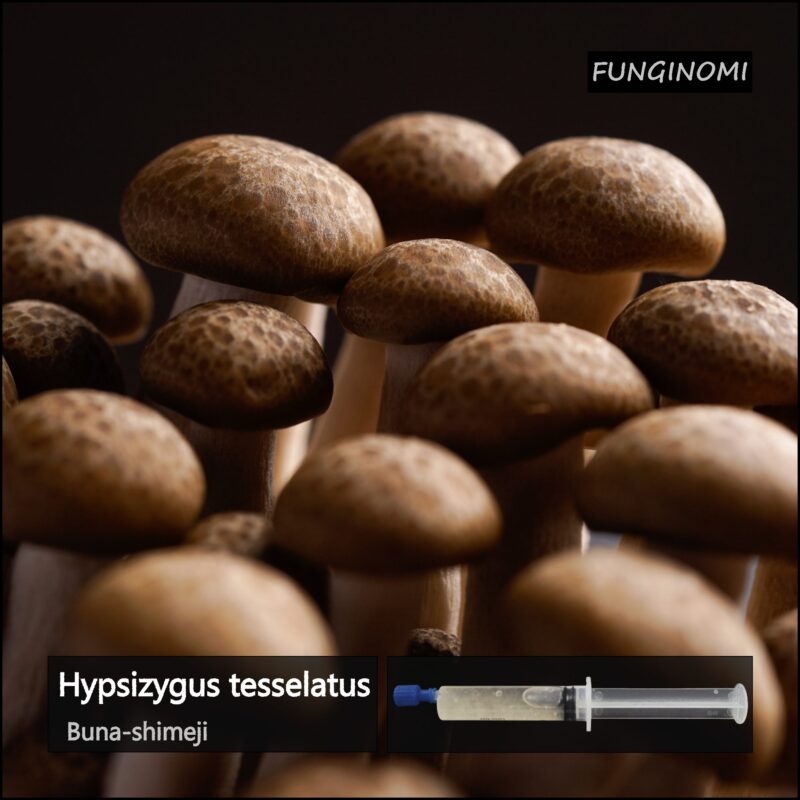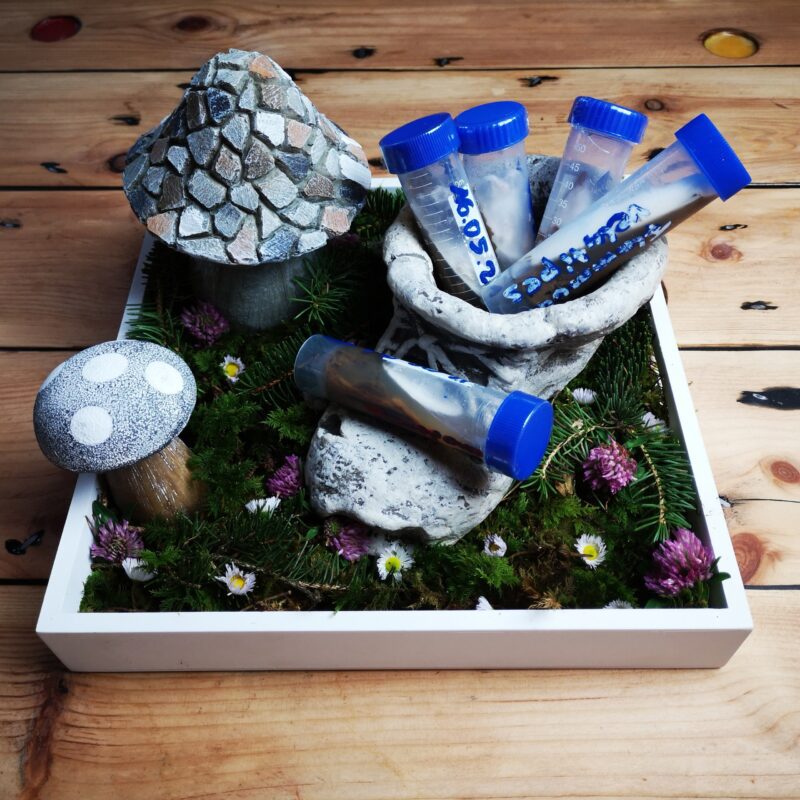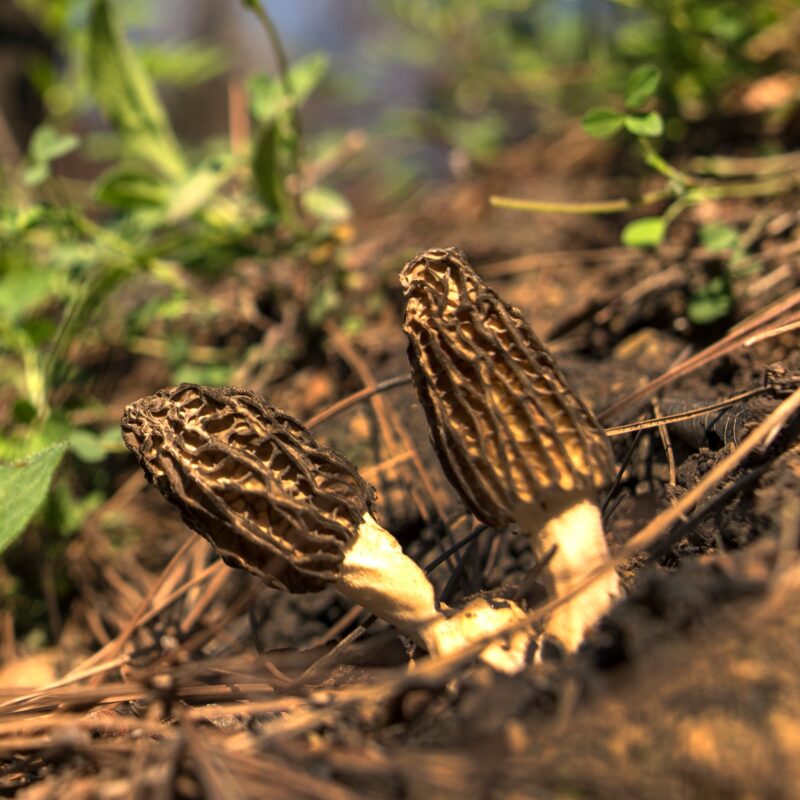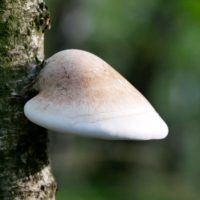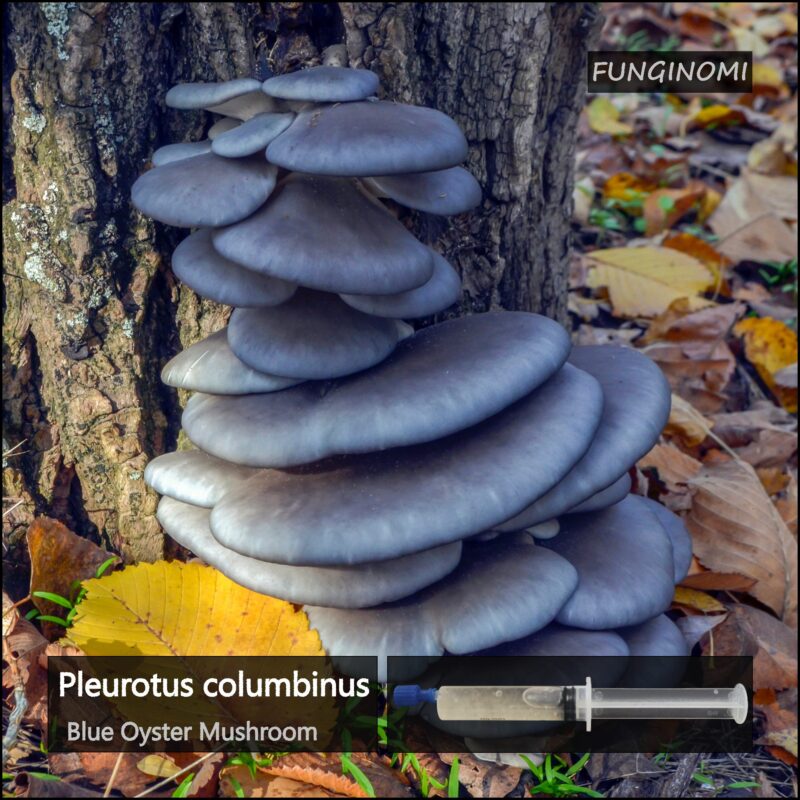Ultimate Guide to Identifying and Combatting Contamination in Mushroom Growing
Introduction of proper mushroom harvesting and storage

The importance Identifying and Combating Contamination in Mushroom Cultivation
When it comes to mushroom cultivation, identifying and combating contamination is of utmost importance. Contamination not only hampers the growth and yield of your mushrooms but also poses a risk to their quality and safety. By understanding the significance of contamination prevention and implementing effective strategies, you can ensure a successful harvest and storage process. In this guide, we will explore the key steps to identifying and combatting contamination in mushroom cultivation, enabling you to maintain a clean and thriving mushroom growing environment.
By proactively identifying and combatting contamination in mushroom cultivation, you can ensure the success of your harvest and the preservation of mushroom quality. Through implementing sterile techniques, practicing good hygiene, and closely monitoring your growing environment, you can mitigate the risks associated with contamination and enjoy healthy, thriving mushrooms. Stay vigilant, follow the provided guidelines, and take necessary steps to maintain a contamination-free cultivation process.
The impact of contamination on crop yield and quality
Contamination in mushroom cultivation can have significant adverse effects on crop yield and quality. Here’s a brief explanation of the impact of contamination:
- Reduced Crop Yield: Contamination introduces unwanted organisms into the growing environment, competing with the mushrooms for resources. This competition can lead to stunted growth, decreased fruiting, and ultimately reduced crop yield. Contaminants can consume nutrients, inhibit mycelial growth, and compromise the overall productivity of the mushroom crop.
- Poor Mushroom Quality: Contaminants can negatively impact the quality of harvested mushrooms. They may cause discoloration, strange odors, or undesirable textures, rendering the mushrooms unappealing or even unsafe for consumption. Contaminated mushrooms may develop spots, lesions, or abnormal growth patterns, affecting their market value and consumer acceptance.
- Risk of Toxicity or Allergic Reactions: Certain contaminants, such as molds or bacteria, can produce toxic compounds or allergenic substances that pose health risks. Consuming contaminated mushrooms can lead to food poisoning, gastrointestinal issues, or allergic reactions in susceptible individuals. Contamination prevention is vital to ensure the safety and well-being of consumers.
- Economic Losses: Contamination-related issues can result in financial losses for mushroom cultivators. Lower yields and compromised quality diminish market value and profitability. Additionally, the costs associated with addressing contamination, such as investing in sanitization measures or discarding contaminated batches, can significantly impact the financial viability of mushroom cultivation operations.
- Reputation and Business Impact: Consistently delivering high-quality mushrooms is crucial for building a positive reputation and maintaining customer loyalty. Contamination incidents can damage the reputation of mushroom growers and their businesses. Negative word-of-mouth, customer dissatisfaction, and loss of trust can have long-term consequences for the success and growth of mushroom cultivation ventures.
In summary, contamination in mushroom cultivation can lead to reduced crop yield, poor quality mushrooms, health risks, economic losses, and damage to reputation. Implementing effective contamination prevention measures is essential to mitigate these impacts and ensure a successful and sustainable mushroom cultivation enterprise.
Understanding Common Contaminants in Mushroom Growing
Various types of contaminants, such as bacteria, molds and viruses
Various types of contaminants can affect mushroom cultivation, including bacteria, molds, and viruses. Here’s an explanation of each type:
-
Bacteria:
- Bacterial Contamination: Bacteria are microscopic organisms that can infiltrate mushroom growing environments and negatively impact cultivation. Common bacterial contaminants include species like Bacillus, Pseudomonas, and Enterobacter.
- Impact on Cultivation: Bacterial contamination can cause discoloration, slimy textures, off-putting odors, and rapid deterioration of mushrooms. It can lead to reduced yields, compromised quality, and potential health risks if harmful strains are present.
- Prevention and Control: Implementing proper sterilization techniques, maintaining hygiene practices, and ensuring a clean growing environment are essential for preventing bacterial contamination. Regular monitoring and prompt intervention upon detection are crucial for controlling the spread.
-
Molds:
- Mold Contamination: Molds are multicellular fungi that thrive in damp, dark, and humid conditions. Common mold contaminants include species like Aspergillus, Penicillium, and Trichoderma.
- Impact on Cultivation: Mold contamination can result in fuzzy growth, discoloration, and the production of mycotoxins, which can be harmful to both mushrooms and humans. It can cause poor quality mushrooms, spoilage, and health risks if consumed.
- Prevention and Control: Maintaining proper ventilation, controlling humidity levels, and ensuring adequate air circulation can help prevent mold contamination. Regular cleaning and sanitation of growing areas, equipment, and substrate materials are crucial. Prompt removal of moldy substrates or mushrooms is necessary to prevent further spread.
-
Viruses:
- Viral Contamination: Viruses are submicroscopic infectious agents that require living host cells to replicate. While less common than bacteria and molds, viral contaminants can still affect mushroom cultivation.
- Impact on Cultivation: Viral contamination can cause abnormal growth, stunting, deformities, and reduced yields in mushrooms. Viruses can affect the genetic makeup of mushroom mycelium, leading to long-term damage and compromised productivity.
- Prevention and Control: Preventing viral contamination primarily involves maintaining strict hygiene practices and preventing the introduction of infected materials or spores into the growing environment. Using virus-free spawn or starting from tissue culture can reduce the risk. There are limited treatment options for viral contamination, making prevention crucial.
It is important for mushroom cultivators to be vigilant in monitoring their growing environments, promptly addressing any signs of contamination, and implementing appropriate prevention and control measures to minimize the impact of bacteria, molds, and viruses on their crops.
How each contaminant affects mushroom growth and development
-
Bacteria: Bacterial contamination can have adverse effects on mushroom growth and development:
- Nutrient Competition: Bacteria compete with mushrooms for nutrients present in the growing medium. This competition can lead to reduced nutrient availability for the mushrooms, resulting in stunted growth and diminished yield.
- Enzyme Activity: Some bacteria produce enzymes that break down mushroom tissues, causing tissue decomposition, sliminess, and foul odors. This enzymatic activity can negatively impact mushroom quality and render them unmarketable.
- Toxin Production: Certain bacteria can produce toxins harmful to mushrooms, inhibiting their growth and development. These toxins can cause discoloration, necrosis (tissue death), and abnormal morphological changes in mushrooms.
-
Molds: Mold contamination can significantly affect mushroom growth and development:
- Nutrient Depletion: Molds consume nutrients present in the growing medium, depriving mushrooms of essential resources. This nutrient depletion can lead to reduced growth, smaller size, and lower yields of mushrooms.
- Competition for Space: Molds can outgrow mushrooms and cover the substrate, restricting mushroom development. The dense mycelial network of molds can hinder the expansion of mushroom mycelium and formation of fruiting bodies.
- Mycotoxin Production: Some molds produce mycotoxins, which are toxic compounds that can negatively impact mushroom growth and pose health risks to consumers. Mycotoxins can cause deformities, discoloration, and reduced quality in mushrooms.
-
Viruses: Viral contamination can hinder mushroom growth and development:
- Genetic Alterations: Viruses infect mushroom mycelium and can alter their genetic makeup. This genetic interference can lead to abnormal growth, stunting, and deformities in mushrooms.
- Reproduction Interference: Viruses can disrupt the reproductive processes of mushrooms, affecting the formation of fruiting bodies and the production of spores.
- Long-term Effects: Persistent viral infections can cause chronic damage to mushroom cultures, resulting in reduced productivity, poor-quality mushrooms, and a decline in overall crop health.
Understanding how each contaminant affects mushroom growth and development is essential for implementing effective prevention and control measures to ensure healthy and successful mushroom cultivation.
Identifying Contamination in Mushroom Cultivation
Visual cues and signs of contamination, including abnormal coloration, texture or odor
-
Abnormal Coloration:
- Discoloration: Contamination can cause mushrooms to exhibit unusual colors. They may appear brown, black, green, yellow, or have spots and patches of abnormal hues that differ from the typical coloration of the mushroom species being cultivated.
- Off-Color Spots: Contamination can manifest as off-color spots or blemishes on the surface of mushrooms, indicating the presence of foreign substances or contaminants.
-
Unusual Texture:
- Sliminess: Contaminated mushrooms may develop a slimy texture, indicating the presence of bacteria or certain molds.
- Fuzzy Growth: Molds can cause the growth of fuzzy or cotton-like mycelium on the surface of mushrooms, leading to a change in texture and appearance.
-
Foul Odor:
- Unpleasant Smells: Contaminated mushrooms may emit foul odors that differ from the typical earthy or mushroom-like scent. These odors can range from putrid, moldy, or rotten smells.
These visual cues and signs of contamination serve as important indicators for mushroom cultivators to identify potential issues and take appropriate actions. Regular inspection and monitoring of mushroom cultures can help detect contamination early on, allowing for timely intervention and prevention of further spread.
Detailed instructions on conducting microbial tests and identifying specific contaminants
-
Sampling for Microbial Tests:
- Wear sterile gloves and use sterile tools (e.g., scalpel, tweezers) to prevent cross-contamination.
- Select representative samples of mushrooms or substrates from different areas of the growing environment.
- Place the samples in sterile containers or bags, ensuring proper labeling to identify their origin.
- Collect samples at different stages of cultivation (e.g., mycelium, primordia, mature mushrooms) to assess contamination at various growth phases.
-
Agar Plate Method for Culturing:
- Prepare appropriate agar media suitable for the targeted contaminants (e.g., PDA for fungi, selective media for bacteria).
- Sterilize the media following standard protocols, and pour it into sterile petri dishes.
- Use aseptic techniques to streak or spread the collected samples onto the agar plates.
- Incubate the plates at the optimal temperature and humidity for the targeted contaminants (varies depending on the microorganism).
-
Observation and Identification:
- Monitor the agar plates regularly for growth of colonies. Different contaminants will exhibit distinct characteristics:
- Bacteria: Bacterial colonies appear as distinct, often circular, colonies with various colors, sizes, and textures.
- Molds: Mold colonies display fuzzy or cotton-like mycelium, with various colors and textures. Observe for spore production and pigmentation changes.
- Viruses: Viruses are not cultured on agar plates but are detected using specialized techniques like PCR or ELISA.
- Observe any changes in colony morphology, color, texture, and other visible features.
- Use microscopy to examine the morphology and structures of the contaminants if necessary.
- For accurate identification, consider consulting a microbiology expert or referring to identification guides or databases specific to mushrooms and contaminants.
- Monitor the agar plates regularly for growth of colonies. Different contaminants will exhibit distinct characteristics:
-
Confirmatory Tests:
- If needed, conduct additional tests to confirm the identity of the contaminants, such as biochemical tests for bacteria or molecular techniques for fungi.
- Some laboratories may offer specialized services for microbial identification and characterization.
Remember, proper laboratory practices, sterility, and safety precautions are crucial throughout the testing process. It is advisable to consult with a microbiology expert or utilize professional laboratory services for accurate identification of specific contaminants in mushroom cultivation.
Preventative Measures to Minimize Contamination Risks
Best practices for maintaining a clean and sterile growing environment
-
Preventive Measures:
- Personal Hygiene: Ensure that all workers involved in the cultivation process follow proper hygiene practices, such as washing hands thoroughly before handling mushrooms or entering the growing area.
- Isolation: Restrict access to the growing area to authorized personnel only, reducing the risk of contamination from outside sources.
- Sanitation: Establish and implement regular cleaning schedules for all equipment, surfaces, and containers used in the cultivation process.
-
Sterilization Techniques:
- Sterilize Substrate: Apply appropriate sterilization methods to the substrate before inoculation, such as heat sterilization (e.g., pressure cooker, autoclave) or chemical sterilization (e.g., hydrogen peroxide, bleach).
- Disinfect Equipment: Clean and disinfect all tools, containers, and equipment used in the cultivation process before and after use. Use alcohol-based solutions or approved disinfectants.
- Air Filtration: Install high-efficiency particulate air (HEPA) filters or air purifiers to minimize airborne contaminants in the growing environment.
-
Proper Ventilation:
- Air Exchange: Maintain adequate air exchange within the growing area to prevent the buildup of stale air, excess humidity, and the accumulation of contaminants.
- Control Humidity: Monitor and control humidity levels to prevent excessive moisture that can encourage the growth of molds and bacteria. Use dehumidifiers or ventilation systems if necessary.
-
Pest Control:
- Monitor and Prevent Pests: Regularly inspect the growing area for pests such as insects, rodents, or mites. Implement measures to prevent their entry, such as sealing cracks and crevices and using screens on windows and vents.
- Integrated Pest Management: Employ integrated pest management techniques, including biological controls, organic pesticides, or physical barriers, to manage pest populations without compromising the sterile environment.
-
Proper Waste Management:
- Dispose of Contaminated Material: Promptly remove and properly dispose of any contaminated or spoiled mushrooms, substrates, or other materials to prevent the spread of contaminants.
- Hygienic Practices: Establish protocols for waste handling, including using sealed containers, separate disposal areas, and regular sanitation of waste management areas.
Implementing these best practices for maintaining a clean and sterile growing environment is essential for minimizing the risk of contamination and ensuring successful mushroom cultivation. Regular monitoring, thorough cleaning, and adherence to strict hygiene protocols will contribute to healthier mushroom crops and improved overall yield.
The importance of proper hygiene, airflow control, and sterilization techniques
-
Proper Hygiene:
- Importance: Maintaining proper hygiene is crucial to prevent contamination in mushroom cultivation. It helps minimize the introduction and spread of harmful microorganisms, ensuring a clean and sterile growing environment.
- Worker Hygiene: Practicing good personal hygiene, such as washing hands thoroughly before handling mushrooms or entering the growing area, reduces the risk of introducing contaminants from the external environment.
- Surface and Equipment Sanitation: Regularly cleaning and sanitizing surfaces, tools, and containers used in the cultivation process prevents the accumulation of harmful microorganisms that can contaminate the mushrooms.
-
Airflow Control:
- Importance: Proper airflow control plays a vital role in maintaining a clean growing environment by reducing the buildup of stale air, controlling humidity levels, and minimizing the risk of airborne contaminants.
- Fresh Air Exchange: Sufficient airflow allows for the exchange of fresh air, which helps dilute and remove any airborne contaminants or volatile organic compounds, ensuring a healthier environment for mushroom growth.
- Humidity Regulation: Controlling airflow helps manage humidity levels, preventing excessive moisture accumulation that can lead to the growth of molds and bacteria. Proper ventilation or the use of dehumidifiers aids in maintaining optimal humidity conditions.
-
Sterilization Techniques:
- Importance: Sterilization techniques are essential to eliminate or reduce the presence of microorganisms that can cause contamination in mushroom cultivation. They help create a sterile environment that promotes healthy mycelium growth and minimizes the risk of harmful pathogens.
- Substrate Sterilization: Properly sterilizing the substrate before inoculation is critical to eliminate potential contaminants, ensuring that the mycelium can thrive without competition.
- Equipment Sterilization: Sterilizing tools, containers, and equipment used in the cultivation process prevents the introduction of contaminants. It reduces the risk of cross-contamination between batches and helps maintain a sterile environment throughout the cultivation cycle.
- Air Filtration: Installing HEPA filters or using air purifiers helps filter out airborne contaminants and maintain a cleaner growing environment.
By emphasizing proper hygiene, effective airflow control, and implementing sterilization techniques, mushroom cultivators can significantly reduce the risk of contamination and create an optimal environment for successful mushroom cultivation.
Combatting Contamination in Mushroom Cultivation
Steps to take when contamination is detected, including isolation and removal of affected areas
-
Identify and Confirm Contamination:
- Thoroughly inspect the mushroom growing area for any signs of contamination, such as abnormal colors, textures, or odors in the mushrooms or substrates.
- Use appropriate diagnostic methods, such as microbial tests or consultation with experts, to confirm the presence of contamination and identify the specific contaminant if possible.
-
Isolate Contaminated Area:
- Immediately isolate the contaminated area to prevent further spread of the contaminants to unaffected mushrooms or substrates.
- Create a physical barrier, such as using plastic sheets or partitions, to separate the contaminated section from the rest of the growing area.
- If necessary, restrict access to the contaminated area to authorized personnel only.
-
Remove Contaminated Materials:
- Wear appropriate protective gear, including gloves and masks, to minimize the risk of exposure to the contaminants.
- Carefully remove and dispose of all contaminated materials, including affected mushrooms, substrate, or any other items that may harbor the contaminants.
- Place the contaminated materials in sealed bags or containers to prevent the spread of spores or microorganisms.
-
Sanitize and Clean:
- Thoroughly clean and sanitize the affected area and any equipment used in handling the contaminated materials.
- Use approved disinfectants or sterilization methods to ensure proper sanitation and elimination of any residual contaminants.
- Follow recommended cleaning protocols for surfaces, containers, tools, and any other items that may have come into contact with the contaminants.
-
Monitor and Prevent Recurrence:
- Regularly monitor the growing area for any signs of recontamination or new outbreaks.
- Implement measures to prevent recurrence of contamination, such as improving hygiene practices, enhancing sterilization techniques, and maintaining proper airflow control.
- Review and update standard operating procedures to incorporate lessons learned from the contamination incident and improve future cultivation practices.
By promptly identifying and addressing contamination, taking necessary isolation and removal measures, and implementing preventive measures, mushroom cultivators can minimize the impact of contamination and maintain a healthy and productive growing environment.
Using fungicides, antibiotics, or other treatments to combat contamination
When it comes to using fungicides, antibiotics, or other treatments to combat contamination in mushroom cultivation, it’s important to note that specific recommendations may vary based on the type of contamination, local regulations, and the specific product instructions. It is always advisable to consult with experts or follow the manufacturer’s guidelines. However, here is some general guidance:
-
Fungicides:
- Fungicides are chemical substances designed to control or kill fungi. They can be used to combat fungal contamination in mushroom cultivation.
- Choose a fungicide that is specifically labeled for use in mushroom cultivation and is effective against the identified fungal contaminant.
- Follow the instructions on the fungicide label carefully, including the recommended dosage, application method, and safety precautions.
- Apply the fungicide as directed, targeting the affected areas or as a preventive measure in the surrounding environment.
- Keep in mind that some fungicides may have specific withdrawal periods before harvest, so adhere to the recommended waiting time.
-
Antibiotics:
- Antibiotics are typically used to combat bacterial contamination in mushroom cultivation.
- Consult with experts or specialists to identify the appropriate antibiotic for the specific bacterial contaminant.
- Obtain antibiotics that are approved for use in mushroom cultivation and adhere to recommended guidelines and regulations.
- Follow the prescribed dosage and application method, taking care to apply the antibiotic only to the affected areas.
- Be aware that some countries or regions may have restrictions or guidelines regarding antibiotic use, so it’s important to adhere to local regulations.
-
Other Treatments:
- Besides fungicides and antibiotics, other treatments may be available for specific types of contamination in mushroom cultivation.
- These treatments can include biocontrol agents, biological fungicides, or natural remedies that help combat specific contaminants.
- Research and consult with experts to explore alternative treatments or preventive measures that align with organic or sustainable cultivation practices.
- Always follow the instructions provided by the manufacturer or supplier of the specific treatment, including application rates, timing, and any safety precautions.
Remember, it is crucial to exercise caution when using any chemicals or treatments in mushroom cultivation. Adhere to safety guidelines, wear appropriate protective gear, and consider the potential impact on the environment and consumer safety. Regular monitoring, preventive measures, and maintaining a clean and sterile growing environment can often be effective in preventing contamination without the need for extensive treatments.
Integrated Pest Management Techniques for Contamination Control
Holistic approaches to preventing contamination
-
Beneficial Organisms:
- Introduce beneficial organisms that can help control or suppress potential contaminants. For example:
- Trichoderma species can be added to the substrate to combat harmful molds.
- Beneficial bacteria like Bacillus subtilis can inhibit the growth of pathogenic bacteria.
- Predatory mites or nematodes can control pests that may introduce contamination.
- Research and identify suitable beneficial organisms for your specific contamination concerns and mushroom cultivation practices.
- Follow proper protocols for introducing and maintaining beneficial organisms to ensure their effectiveness.
- Introduce beneficial organisms that can help control or suppress potential contaminants. For example:
-
Environmental Conditions:
- Optimize environmental conditions to create an inhospitable environment for contaminants. This includes:
- Maintaining proper airflow and ventilation to minimize stagnant air and excess humidity, which can favor contamination.
- Controlling temperature within the ideal range for mushroom growth, as different contaminants thrive under different temperature conditions.
- Monitoring and adjusting light exposure, as excessive light can promote certain contaminant growth.
- Regularly monitor and maintain environmental parameters to create conditions that are favorable for mushroom growth while inhibiting contamination.
- Optimize environmental conditions to create an inhospitable environment for contaminants. This includes:
-
Hygiene and Sanitation:
- Emphasize strict hygiene and sanitation practices throughout the cultivation process. This includes:
- Practicing good personal hygiene by washing hands thoroughly before handling mushrooms or entering the growing area.
- Regularly cleaning and sanitizing surfaces, tools, containers, and equipment to minimize the introduction and spread of contaminants.
- Implementing proper waste management to promptly remove any potential sources of contamination.
- Employing proper storage techniques for substrates, supplements, and harvested mushrooms to prevent contamination during storage.
- Emphasize strict hygiene and sanitation practices throughout the cultivation process. This includes:
-
Quality Spawn and Substrate:
- Use high-quality spawn and sterilized substrates to reduce the risk of contamination from the start.
- Source spawn from reliable suppliers to ensure its purity and viability.
- Properly sterilize substrates to eliminate potential contaminants before inoculation.
- Consider using commercially available sterilized substrates to minimize the risk of contamination.
-
Record-Keeping and Analysis:
- Maintain thorough records of cultivation practices, including observations, contamination incidents, and corrective actions taken.
- Regularly analyze and evaluate the recorded data to identify patterns, trends, and potential areas for improvement.
- Implement necessary adjustments and improvements based on the analysis to continuously enhance contamination prevention measures.
By adopting holistic approaches that encompass beneficial organisms, environmental control, hygiene practices, quality spawn, and ongoing analysis, mushroom cultivators can create a robust system that minimizes contamination risks and promotes a healthy and productive mushroom cultivation environment.
Explore biological controls, physical barriers, and other strategies for long-term contamination prevention
Explore biological controls, physical barriers, and other strategies for long-term contamination prevention
- Biological Controls:
- Beneficial microorganisms: Introduce beneficial microorganisms, such as Trichoderma or Bacillus subtilis, which can inhibit the growth of contaminants and promote a healthy fungal ecosystem.
- Companion planting: Cultivate companion plants that release natural compounds or attract beneficial insects that can help control potential contaminants.
- Antagonistic fungi: Incorporate antagonistic fungi, like Pleurotus ostreatus (oyster mushroom), which can suppress the growth of other fungi and pathogens.
- Physical Barriers:
- Air filtration systems: Install effective air filtration systems, such as high-efficiency particulate air (HEPA) filters, to minimize the entry of airborne contaminants into the growing area.
- Isolation chambers: Use isolation chambers or dedicated clean rooms to isolate sensitive stages of mushroom cultivation, preventing contamination from spreading throughout the entire facility.
- Physical enclosures: Implement physical enclosures like plastic sheets or walls to separate different growing areas and prevent cross-contamination.
- Hygienic Practices:
- Strict sanitation protocols: Implement strict sanitation protocols for all individuals entering the growing area, including thorough handwashing, wearing clean protective clothing, and disinfecting tools and equipment.
- Foot baths: Install foot baths with sanitizing solutions at entry points to prevent the introduction of contaminants from footwear.
- Quarantine area: Establish a designated quarantine area to isolate and monitor incoming materials, such as spawn or substrates, before introducing them into the main growing area.
- Integrated Pest Management (IPM):
- Develop and implement an integrated pest management program that focuses on prevention, early detection, and control of pests that may introduce contaminants.
- Use biological control agents like predatory mites, nematodes, or beneficial insects to manage pests and prevent potential contamination.
- Monitor and manage pest populations using traps, barriers, or environmental controls to minimize the need for chemical interventions.
- Continuous Monitoring and Quality Control:
- Implement regular monitoring protocols to detect any signs of contamination, including visual inspections and microbial tests.
- Maintain a rigorous quality control system to ensure the purity and integrity of spawn, substrates, supplements, and other inputs used in cultivation.
- Conduct periodic audits and reviews of contamination prevention strategies to identify any weaknesses and make necessary adjustments.
By combining biological controls, physical barriers, hygienic practices, integrated pest management, and ongoing monitoring and quality control, growers can establish a comprehensive and effective long-term contamination prevention strategy in mushroom cultivation.
Troubleshooting and Problem Solving
Common challenges and issues faced during mushroom cultivation
-
Slow or Poor Mushroom Growth:
- Insufficient or improper moisture levels: Adjust the moisture content of the substrate to the appropriate level for the mushroom species being cultivated.
- Inadequate air circulation: Ensure proper ventilation and airflow in the growing area to promote healthy mushroom growth.
- Incorrect temperature: Maintain the optimal temperature range for the specific mushroom species being cultivated.
- Poor spawn quality: Ensure that you are using high-quality spawn from reputable suppliers.
-
Contamination:
- Maintain a clean and sterile growing environment by implementing strict hygiene practices, such as regular cleaning and disinfection of tools, equipment, and growing surfaces.
- Use quality spawn and sterilized substrates to minimize the risk of contamination.
- Regularly monitor for signs of contamination, such as unusual colors, odors, or textures, and take prompt action to isolate and remove affected areas.
-
Pest and Insect Infestation:
- Implement preventive measures, such as physical barriers or screens, to prevent pests and insects from entering the growing area.
- Introduce beneficial insects or natural predators that can control pest populations.
- Practice proper waste management to eliminate potential breeding grounds for pests.
-
Fruiting Challenges:
- Inadequate light exposure: Adjust lighting conditions to provide the appropriate amount of light for fruiting.
- Suboptimal humidity levels: Monitor and adjust humidity levels to match the requirements of the specific mushroom species being cultivated.
- Timing and duration of fruiting: Follow the recommended fruiting schedule for the particular mushroom species.
-
Abnormal Mushroom Shapes or Sizes:
- Incorrect harvesting techniques: Ensure that mushrooms are harvested at the right stage of development and with proper handling to maintain their shape and size.
- Nutrient imbalance: Evaluate the nutrient composition of the substrate and adjust as needed to provide a balanced nutritional profile for optimal mushroom growth.
-
Mushroom Diseases:
- Monitor for signs of common mushroom diseases, such as molds, viruses, or bacterial infections, and take immediate action to isolate and treat affected mushrooms or substrates.
- Maintain a clean and hygienic growing environment to minimize the risk of disease transmission.
-
Seasonal or Environmental Factors:
- Adapt cultivation practices to accommodate seasonal changes in temperature, humidity, and light exposure.
- Install climate control systems, such as heaters, coolers, or humidifiers, to create and maintain the ideal growing conditions.
It’s important to note that specific challenges may vary depending on the mushroom species being cultivated and the specific growing conditions. Regular monitoring, adjustments, and ongoing learning will help cultivators overcome these challenges and improve their cultivation techniques.
Troubleshooting tips and solutions for specific contamination-related problems
-
Mold Contamination:
- Identify the source of mold contamination, which can be from contaminated spawn, substrate, or environmental factors.
- Increase air circulation and improve ventilation in the growing area to reduce humidity and create an unfavorable environment for mold growth.
- Adjust substrate moisture levels to ensure they are within the optimal range for mushroom growth, as excessive moisture can promote mold growth.
- Use antifungal treatments like hydrogen peroxide or food-grade essential oils to control mold growth on affected areas.
- Remove contaminated materials, such as moldy substrates or heavily infected mushrooms, to prevent further spread.
-
Bacterial Contamination:
- Isolate and remove infected mushrooms or substrates promptly to prevent the spread of bacterial contamination.
- Improve sanitation practices, ensuring that all tools, equipment, and growing surfaces are thoroughly cleaned and disinfected.
- Consider using antibacterial treatments approved for mushroom cultivation to control bacterial contamination.
- Maintain proper moisture levels in the growing environment, as excessive moisture can create conditions conducive to bacterial growth.
- Review your watering techniques to prevent water accumulation on the substrate surface.
-
Viral Contamination:
- Unfortunately, there are limited treatments for viral contamination. Prevention is the key focus in managing viral diseases in mushroom cultivation.
- Implement strict sanitation practices to prevent the introduction and spread of viruses.
- Use high-quality, virus-free spawn from reputable suppliers to minimize the risk of viral contamination.
- Practice strict hygiene protocols, including proper handwashing, to minimize the risk of transmitting viruses between mushroom batches.
- Monitor for any abnormal growth or symptoms in mushrooms and promptly remove and destroy infected individuals to prevent viral spread.
-
Insect or Pest Infestation:
- Identify the specific pests causing infestation and determine the most appropriate control methods.
- Implement physical barriers, such as fine mesh screens or nets, to prevent insects from entering the growing area.
- Introduce beneficial insects or biological control agents that target the specific pests causing the infestation.
- Practice proper waste management and remove any decaying organic matter that can attract pests.
- Regularly inspect the growing area and promptly address any signs of pest infestation to prevent further contamination.
-
Yeast or Bacterial Slime:
- Improve ventilation and air circulation in the growing area to reduce excessive humidity, as yeast and bacterial slime thrive in damp conditions.
- Adjust watering techniques to prevent overwatering and waterlogging of the substrate.
- Remove affected mushrooms or substrates and ensure proper disposal to prevent the spread of yeast or bacterial slime.
- Maintain strict hygiene practices to minimize the introduction of contaminants that can lead to yeast or bacterial growth.
- Consider using microbial testing to identify specific strains of yeast or bacteria and determine appropriate treatments.
Remember, prevention is key in managing contamination-related problems. Implementing good hygiene practices, maintaining a clean growing environment, and regularly monitoring for signs of contamination can help address and prevent issues before they become severe.
Conclusion
The importance of vigilant monitoring and prompt action in combating contamination
Vigilant monitoring and prompt action are crucial in combating contamination in mushroom cultivation. Here’s a summary of their importance:
-
Early Detection: Regular monitoring allows growers to identify signs of contamination at the earliest stages. Detecting contamination early increases the chances of successful intervention and prevents the spread of contaminants to unaffected areas.
-
Preventive Measures: Prompt action enables growers to take immediate steps to isolate and remove contaminated substrates, mushrooms, or equipment. By acting quickly, growers can minimize the impact of contamination and prevent its spread to healthy mushroom crops.
-
Preservation of Yield and Quality: Timely intervention helps protect the overall yield and quality of the mushroom harvest. Contamination can compromise the growth and development of mushrooms, leading to reduced yields and lower-quality produce. Taking prompt action ensures that the majority of the crop remains healthy and viable.
-
Cost and Resource Management: Addressing contamination issues early on helps minimize the financial and resource costs associated with crop loss. By identifying and resolving contamination promptly, growers can avoid extensive damage, reduce waste, and optimize resource allocation.
-
Prevent Contamination Spreading: Acting swiftly when contamination is detected helps prevent the spread of contaminants to other growing areas, batches, or facilities. Isolating and removing affected materials prevents cross-contamination and protects the integrity of other mushroom crops.
-
Maintaining Reputation and Customer Trust: Vigilant monitoring and prompt action demonstrate a commitment to quality and food safety. By effectively combating contamination, growers maintain their reputation, customer trust, and market credibility.
In summary, maintaining a vigilant monitoring system and taking prompt action when contamination is detected are essential practices in mushroom cultivation. By doing so, growers can protect their crops, minimize losses, preserve quality, and sustain a healthy and productive growing environment.
Proactive strategies for maintaining a healthy and productive mushroom growing operation
-
Emphasize Prevention: Remind readers that prevention is always better than dealing with contamination issues after they arise. Encourage them to prioritize proactive measures to maintain a clean and sterile growing environment.
-
Implement Regular Monitoring: Stress the importance of regular monitoring to detect any signs of contamination or other issues early on. Encourage readers to establish a monitoring schedule and stick to it diligently.
-
Invest in Education: Highlight the value of continuous learning and staying up-to-date with the latest best practices in mushroom cultivation. Encourage readers to attend workshops, conferences, or join online communities to expand their knowledge and exchange experiences with fellow growers.
-
Establish Strict Hygiene Practices: Urge readers to implement and enforce strict hygiene protocols to prevent the introduction and spread of contaminants. Emphasize the significance of proper handwashing, sanitizing tools and equipment, and maintaining a clean growing environment.
-
Promote Ongoing Research: Encourage readers to engage in research and experimentation to improve their cultivation techniques. Inspire them to explore innovative methods, technologies, and sustainable practices that can enhance the health and productivity of their mushroom growing operation.
-
Collaborate and Share Knowledge: Highlight the benefits of collaboration and knowledge sharing among growers. Encourage readers to participate in forums, discussion groups, or local associations to exchange ideas, troubleshoot problems, and collectively work towards maintaining a thriving mushroom cultivation community.
-
Stay Proactive: Motivate readers to be proactive in addressing challenges and implementing preventive measures. Encourage them to regularly assess their growing operation, identify potential risks, and take proactive steps to mitigate them.
By adopting proactive strategies, growers can significantly reduce the risk of contamination, ensure a healthy growing environment, and maximize their mushroom crop yield and quality. Empower readers to embrace these strategies and cultivate a thriving and sustainable mushroom growing operation!

